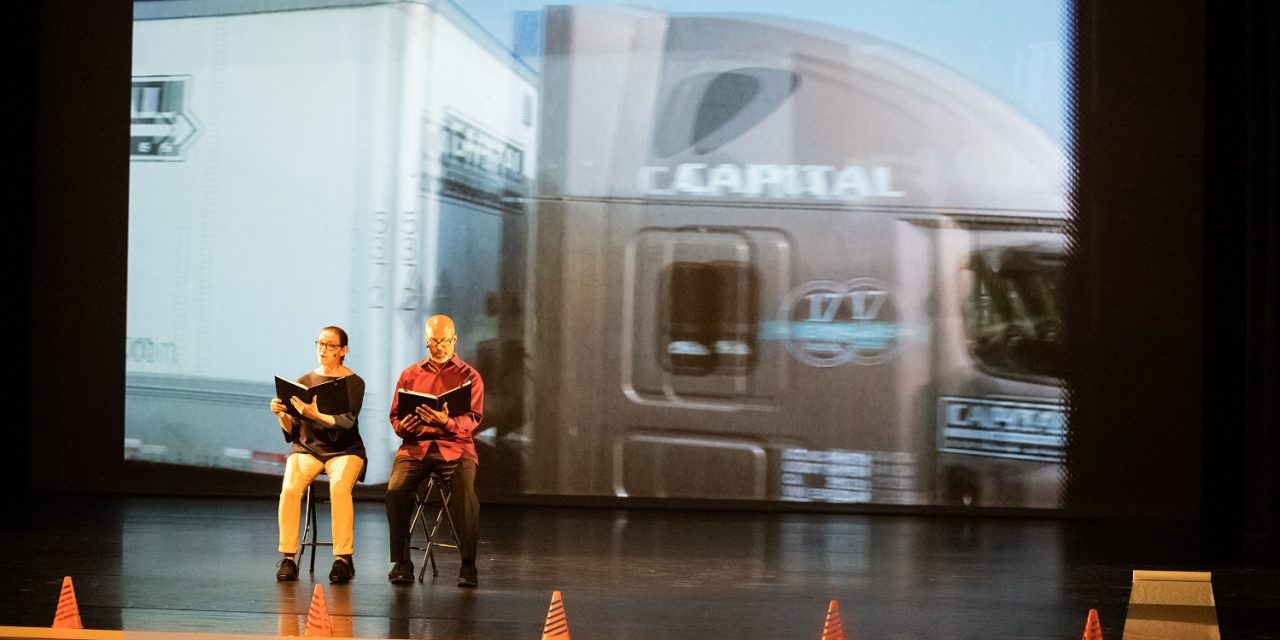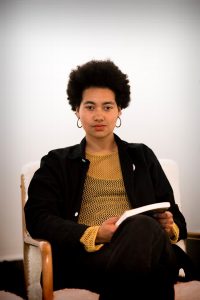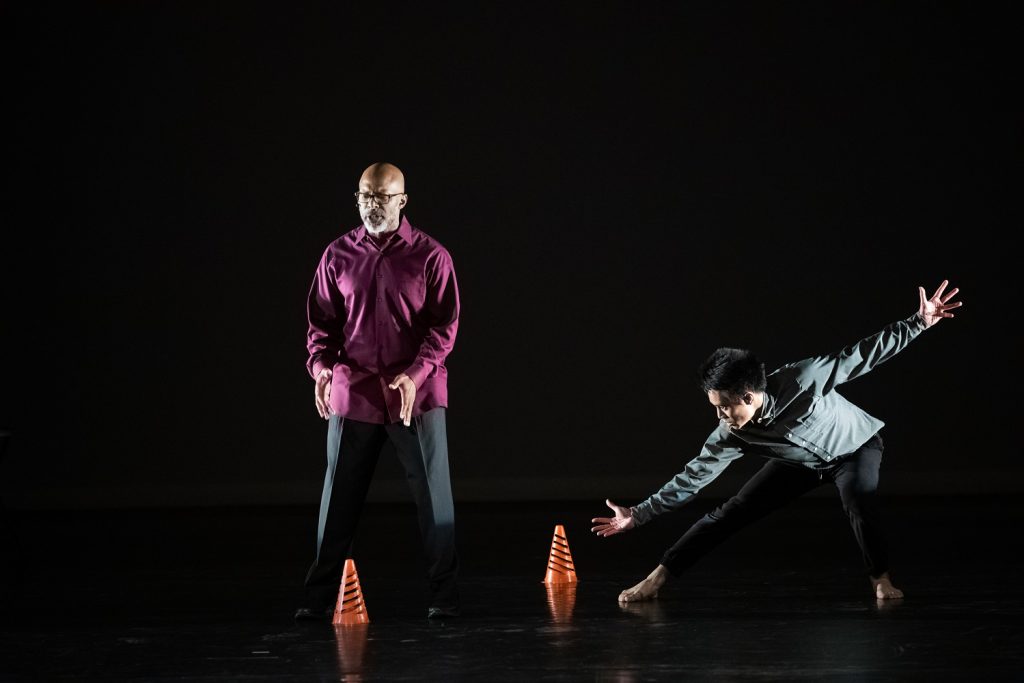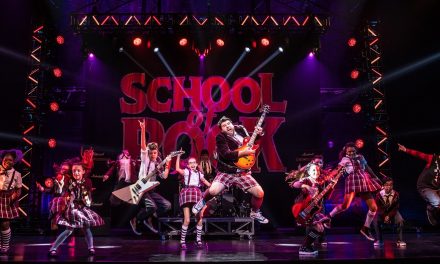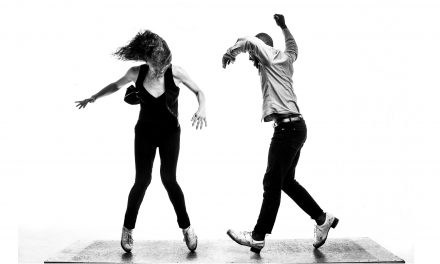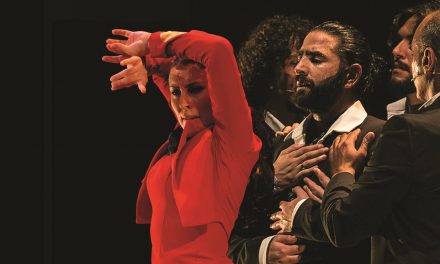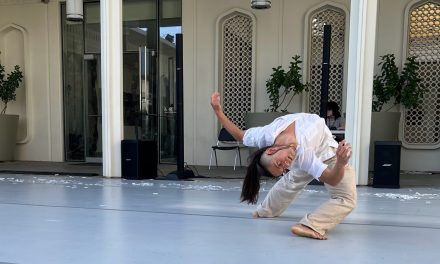Dancing Through Prison Walls choregraphed by Suchi Branfman and presented on Friday, November 8, 2019 at Garrison Theatre, in Claremont, CA., is a finely crafted work of art about social justice expressed through intensely personal voyages of pain, fear, and frustration with the prison industrial complex. Each person involved made choices to ensure that the journey of incarceration did not exclude humanity, sanity, caring, or growth.
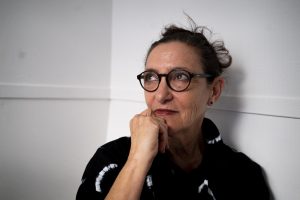
Suchi Branfman – Photo courtesy of the artist
The program featured 2 stories. The first was about Janie, a tough-as-nails, hardened, jaded woman resigned to a life of incarceration. She takes no guff, but she takes in birds. She heals the wounded, nurtures the young and generously gives them away when they are well. She is the bird whisperer who knows the language and personality of each species that finds their way to her. Janie’s story is one of love and redemption.
Janie’s story was shared personally with Suchi Branfman, over a period of several visits to the facility where Janie was incarcerated. It was choreographically crafted piece of spoken word, eloquent in its simplicity and clarity. Branfman shared the stage with Lukaza Branfman-Verissimo, who played a doleful flute that represented the start of each chapter and a different bird species. Her gestures toward a visual diagram created a logical flow, and hints of the magic that took place during the telling of the story. The rhythm of the words and chapters took us more deeply into Janie’s world. The precise use of simple movement in the stage space clarified whether the spoken words were Janie’s or Branfman’s, and kept the listeners alert.
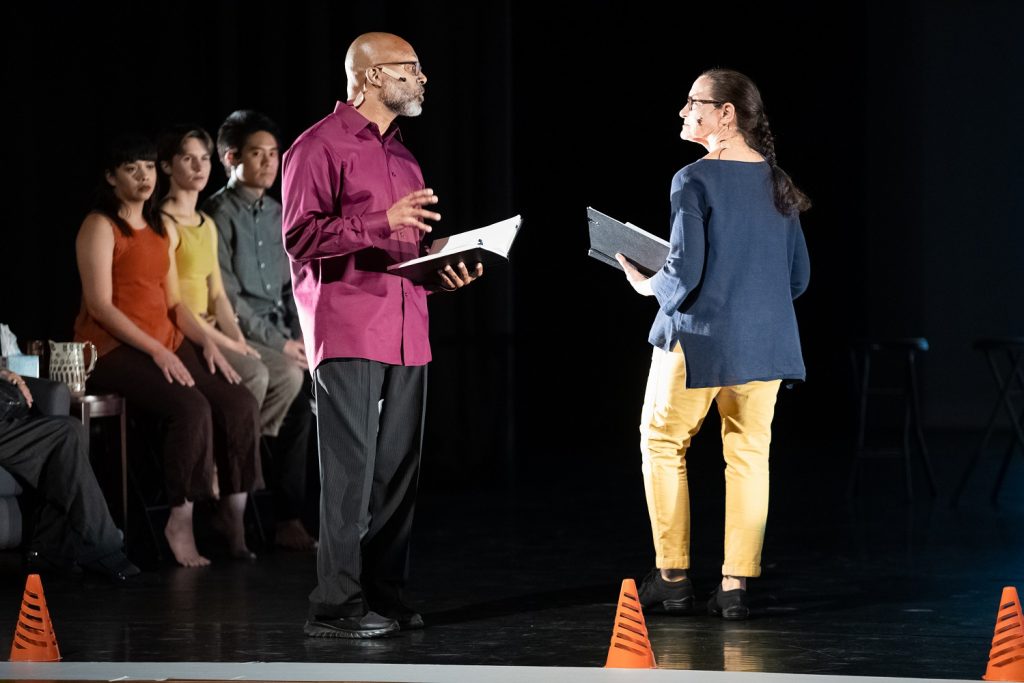
Dancing Through Prison Walls – “Janie” and “Angee’s Journey” – Dancers: Ernst Fenelon Jr., Suchi Branfman, Lukaza Branfman-Verissimo, Amy Oden, Anna Paz, Tom Tsai – Photo by David Torralva
The second work in the program, entitled Angee’s Story was a dance, a poem, and an homage to a series of epic journeys made by Angee to visit her son Ernst during his incarceration.
Ernst escorted Angee across the stage at the opening, gently leading her with a firm hand on her elbow. She sat in a chair to witness and experience again the powerful journeys of faith and love she made monthly for 14 years. The accompanying image montage followed the 800-mile narrative of local bus to train, to change trains, to wait between trains, to catch another bus and finally arrive at the prison.
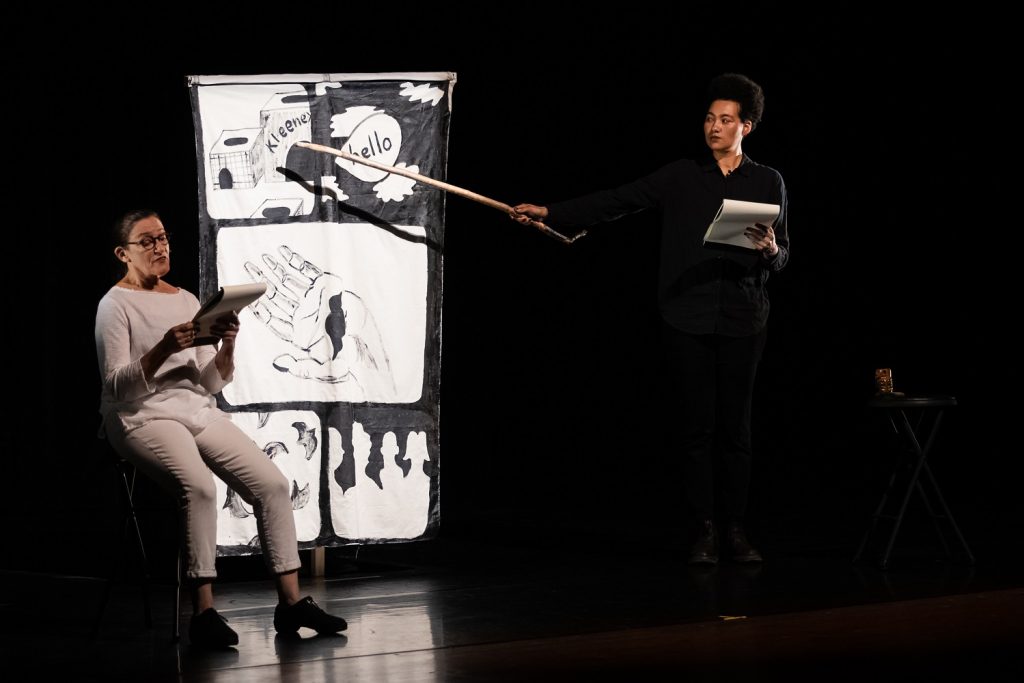
Suchi Branfman and Lukaza Branfman-Verissimo – Dancing Through Prison Walls – Photo by David Torralva
The ingredients outlined below formed a tapestry woven to depict the love, the privation and the hope of this family. They honorably represent all families who have a loved one inside.
Images – the montage of trains, buses plus Angee as she traveled over 13 hours each way
plus, family and holiday Polaroids taken at the prison, also projected behind the action on stage.
Music – sound collage that propels the viewer and performer alike.
Dance – different dancers, each evoking a mood, pouring their bodies into expressions of courage, fear, ennui, hope, and determination. When working together as a group, they represented the humanity of the prison – different bodies, different height, different ages – and the intense motion that is required to live through the experience and move forward.
Furniture – a symbol of home life, placed to one side of the stage. Chairs served as resting places, allowing moments for the performers to be away from the action but have a seat to view and absorb the ongoing story.
The words woven, tapestry, montage all speak of a blending of elements that combine to create a single unique whole. That is what Angee’s Story did. We saw Ernst, the gentleman whose mother made the physical journeys. And we saw his travels/travails, too. Best of all, we saw him narrate, dance and master the stage to courageously share his truth: the raw experiences of incarceration, and finally his liberation and recovery from prison and the choices he owned.
Following the performance, a third portion of the program engaged the audience in dialog to explore how we all are affected by the prison industrial complex. I was strongly moved when a young women commented that she did not notice any connection to it, other than the fact that there was a prison less than 30 minutes from her home. She has driven by it countless times, and noted that there was always a feeling of sadness, or solemnness each time. Not affected?
T
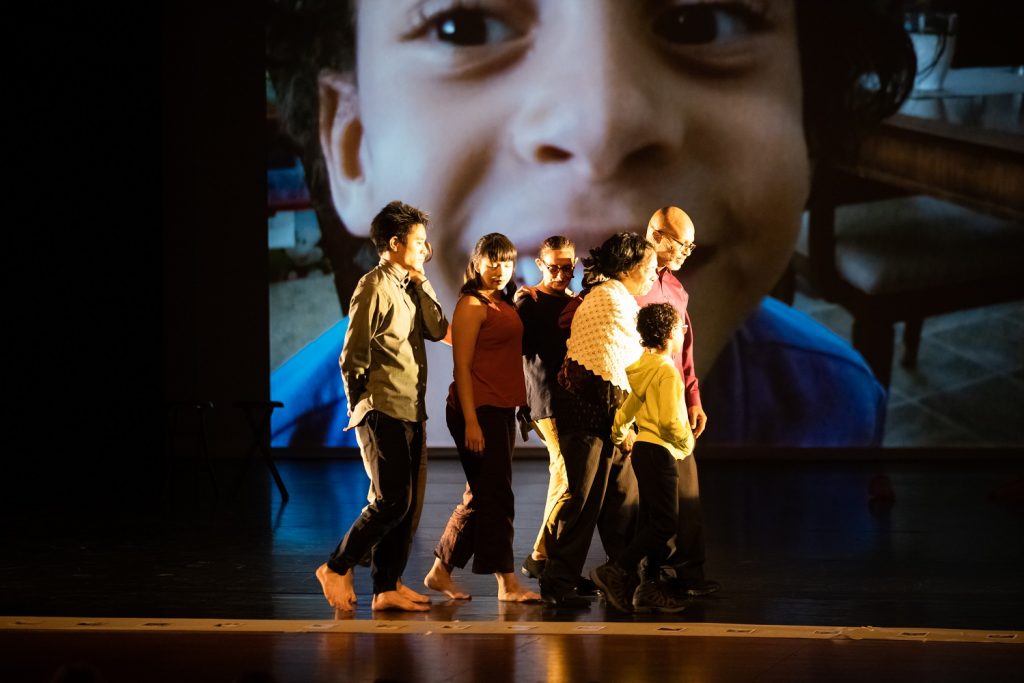
Dancing Through Prison Walls – “Janie” and “Angee’s Journey” – Dancers: Ernst Fenelon Jr., Suchi Branfman, Lukaza Branfman-Verissimo, Amy Oden, Anna Paz, Tom Tsai – Photo by David Torralva
his dialog revealed other layers of truth about the system, the people directly involved, and those who trust that their loved ones will get through with their support. My personal reflection turned toward those whose families may have turned their backs on their incarcerated relatives. A representative from InsideOut Writers, a nonprofit that provides creative writing and transition support for incarcerated youth, commented that dialogs like this are the first steps in raising awareness and healing the community.
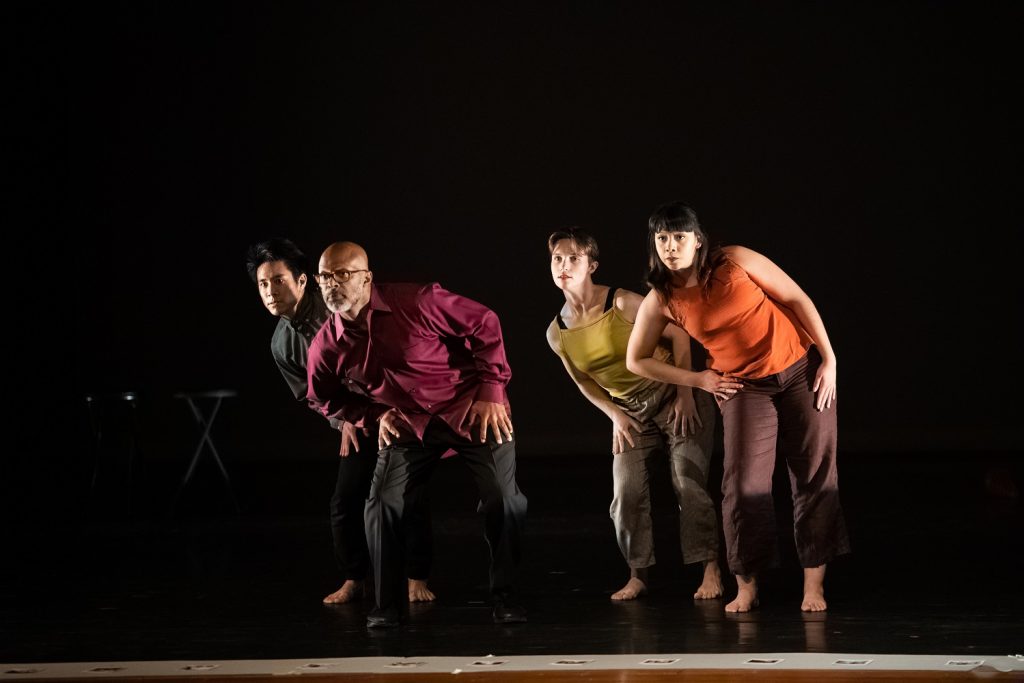
Dancing Through Prison Walls – “Janie” and “Angee’s Journey” – Dancers: Ernst Fenelon Jr., Suchi Branfman, Lukaza Branfman-Verissimo, Amy Oden, Anna Paz, Tom Tsai – Photo by David Torralva
I am thankful that people like Suchi Branfman bring their creativity, caring, and nurturing gifts to places like the California Rehabilitation Center so that the souls who have been incarcerated will find their way to life, love and ways to express their own stories.
The cast included Ernst Fenelon, Jr., Amy Oden, Anna Paz, and Tom Tsai, with Angee Fenelon and Jeremiah; Visuals were by Lukaza Branfman-Verissimo; Fenelon; Video by Tom Tsai; Composers included Paul Smadbeck, Hermeto Pascoal, Nebojsa Joban Zivlovic, Ayub Agada; Lighting Designer was Katelan Braymer.
Written by Mary Pat Cooney for LA Dance Chronicle, November 20, 2019.
Featured image: Dancing Through Prison Walls – Suchi Branfman and Ernst Fenelon Jr. – Photo by David Torralva

